
 Low Sugar Recipes SPRING 2020 CONTENTS COOKING LIGHT LOW-SUGAR RECIPES Learn how to reduce calories from added sugars and still enjoy the foods and drinks you love. Get excited about breakfast again with wholesome low-sugar dishes that help prevent that midmorning slump. Instead of packing a high-carb sandwich or sugary snack, turn to these low-sugar, portable lunches and munchies. Pump up the protein and dial back the carbs in these easy dinner recipesall ready in 30 minutes or less. Replace high-sugar desserts with these sweet treatsall 10 grams or less of added sugars per serving. Introduction
Low Sugar Recipes SPRING 2020 CONTENTS COOKING LIGHT LOW-SUGAR RECIPES Learn how to reduce calories from added sugars and still enjoy the foods and drinks you love. Get excited about breakfast again with wholesome low-sugar dishes that help prevent that midmorning slump. Instead of packing a high-carb sandwich or sugary snack, turn to these low-sugar, portable lunches and munchies. Pump up the protein and dial back the carbs in these easy dinner recipesall ready in 30 minutes or less. Replace high-sugar desserts with these sweet treatsall 10 grams or less of added sugars per serving. Introduction 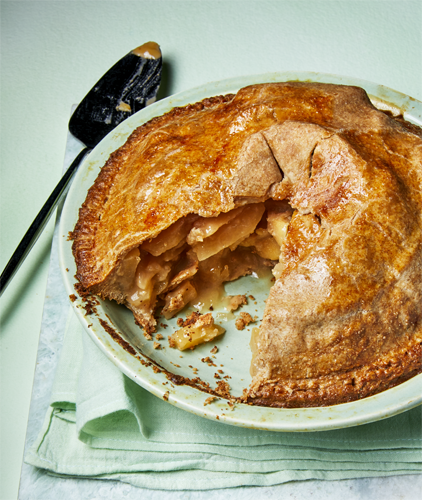 Three kinds of apples provide natural sweetness in this pie.
Three kinds of apples provide natural sweetness in this pie.
At Cooking Light , we believe that all kinds of foods can fit, so we recommend moderation when it comes to sugar-laden foods. Although sugar often gets a bad rap, in its natural state, it is a relatively harmless carbohydrate that our bodies need to function. Its found naturally in fruits, vegetables, and dairy. The problem comes when sugar is added to foods during processing for added flavor, texture, or color. This is more common than you may realizesugar is frequently added not only to sweets but also to processed foods like frozen dinners and salad dressings. You dont have to be in the candy aisle to be surrounded by added sugar! Its this added sugar, not the naturally occurring kind, that can wreak havoc on your waistline and your health..
At Cooking Light we believe that all kinds of foods can fit, so we recommend moderation when it comes to sugar-laden foods. But to keep you on track with your healthy-eating lifestyle, we offer a wide variety of low-sugar recipes from . None of the recipes have more than 10 grams of added sugar per servingand most have less. Plus, these recipes come with the bonus of being packed with vitamins, minerals, and fiber. In our Test Kitchens, weve come up with ways to create satisfying recipes using less sugar, natural sugars, and alternative sweeteners, all designed to help you reduce added sugars in your diet and improve your health. 01.
GUIDE TO SUGAR Sugar is not off-limits in a healthy diet. Heres the lowdown on the types of sugars and how much is OK. SUGAR: THE SWEET TRUTH 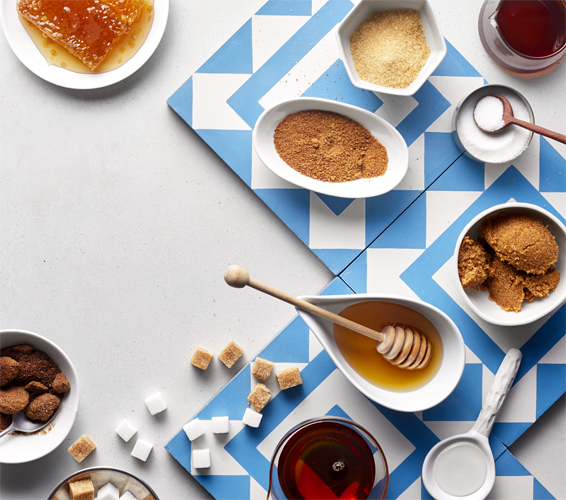 Overindulge your sweet tooth, and you up your chances of heart disease, tooth decay, and weight gain. Because sugar also stokes inflammation, it may spur other diseases. But sugar is critical in your cooking and baking. It gives you that delicious, deep browning in waffles, cookies, and cakes.
Overindulge your sweet tooth, and you up your chances of heart disease, tooth decay, and weight gain. Because sugar also stokes inflammation, it may spur other diseases. But sugar is critical in your cooking and baking. It gives you that delicious, deep browning in waffles, cookies, and cakes.
It balances salty, sour, or acidic flavors in salad dressings, marinades, and sauces. It keeps breads and baked goods tender. Eliminate all sugar from your diet, and your cooking and eating could trend toward blah. The key is to use it judiciously and in moderation. TYPES OF SUGAR Here are eight commonly used sugarsnatural and processedand information about how some sugars rank on the glycemic index. (Pure glucose has a ranking of 100.) 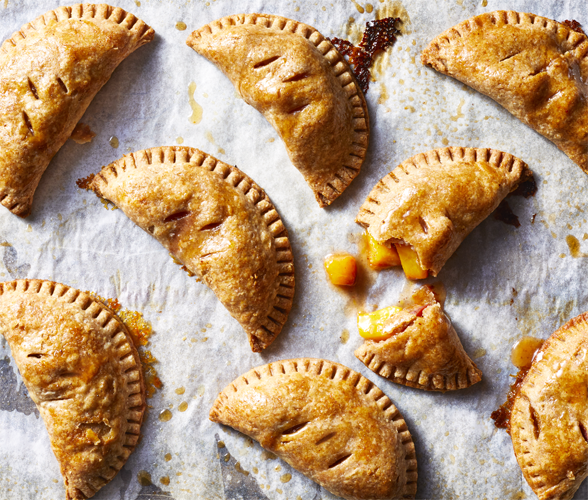 1. (Pure glucose has a ranking of 100.)
1. (Pure glucose has a ranking of 100.)  1.
1.
GRANULATED SUGAR Regular sugar is relatively high on the glycemic index (60 to 65 out of 100)so its metabolized faster, causing a bigger sugar high and crash. 2. BROWN SUGAR Molasses is what makes brown sugar brown. Use light brown sugar in baking, condiments, and glazes; use dark brown for baked beans. 3. 4. 4.
COCONUT SUGAR This sugar has no coconut flavor. At 54 on the glycemic index, its metabolized more slowly than other sugars, tempering that sugar high. 5. CORN SYRUP Made from corn, this sweetener isnt the same as high-fructose corn syrup. HFCS contains fructose and is sweeter than corn syrup but is no worse for you, nutritionally, than other sugars. 6.
MAPLE SYRUP With a glycemic index number of 54, maple syrup is rising in popularity. Though it boasts disease-fighting antioxidants (darker grades deliver more than lighter ones), its still sugar. 7. HONEY One study showed that this yellow- to amber-colored sweetener has about the same antioxidant capacity as maple syrup, though its much higher on the glycemic index. 8. AGAVE This syrup comes in varying shades of amber and dissolves well in cold liquids.
Its 25% sweeter than sugar, so you can use less, and its the lowest on the glycemic index of all the sugars here. SNEAKY SOURCES OF SUGAR Sugar is added to 68% of packaged foods and drinks in the U.S.plenty of which arent even sweet-tasting. So if you want to cut back on the sugar in your diet, being mindful of these products is an easy first step. Here are a few places sugar typically hides: PLANT-BASED MILKS Most almond, coconut, soy, and other plant-based milks contain 2 to 5g of total sugar per serving. That said, we found an almond milk that contained 15g. Look for varieties that are labeled unsweetened.
NUT BUTTERS Some peanut butters deliver as much as a teaspoon of sugar per 2-tablespoon serving. Seek out a spread that lists simply nuts as an ingredient, or perhaps nuts and salt or oil. Flavored nut butters will almost always contain added sugar. BACON Most bacon has added sugar, as it boosts flavor in salt-cured foods. But a few companies (Applegate and Wellshire Farms) are making delicious bacon without any sugar. Cant find these? Weve noticed that most lower-sodium bacons also dont contain sugar.
KETCHUP Though most barbecue sauces and ketchups have added sugar, not all of the sugar listed in the nutrition facts is addedtomatoes contain natural sugar. Compare ingredient lists and pick one with sugar as far down as possible. CHICKEN STOCK A handful of chicken broth and stock brands contain unnecessary added sugar. Fortunately, there are plenty of brands to choose from that do not, so read ingredient lists and select a product that contains no added sugar. HOW MUCH IS OK? When it comes to sugar, how its delivered makes all the difference. Naturally occurring sugars in fruit, veggies, and even milk typically dont need to be on your worry list, as they come bundled with nutrients, fiber, vitamins, and antioxidant benefits.
But added sugarssweeteners in processed food, from cane sugar to honey and high-fructose corn syrupdeserve scrutiny. 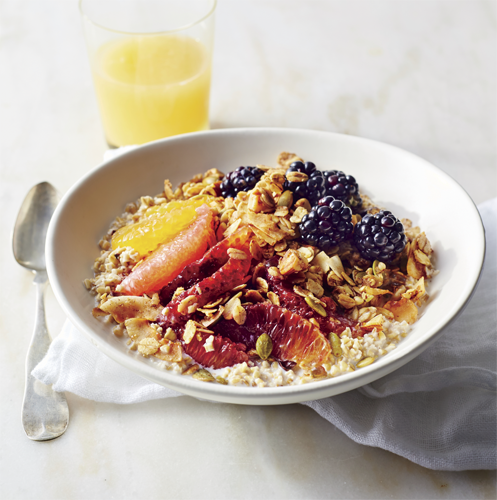 Go sweet without added sugar by tossing fresh or dried fruit into granola or grains. The USDA recommends limiting added sugars to 10% of your daily calories. For a 1,600-calorie diet, that means no more than 160 calories (10 teaspoons/40g) from added sugars. The American Heart Association advises even less: only 100 calories from added sugar daily (6 teaspoons/24g) for women and about 150 calories (9 teaspoons/36g) for men. Most Americans get way more than this, though: We average 19 teaspoons of added sugar a day312 calories worthmostly from beverages and packaged snacks.
Go sweet without added sugar by tossing fresh or dried fruit into granola or grains. The USDA recommends limiting added sugars to 10% of your daily calories. For a 1,600-calorie diet, that means no more than 160 calories (10 teaspoons/40g) from added sugars. The American Heart Association advises even less: only 100 calories from added sugar daily (6 teaspoons/24g) for women and about 150 calories (9 teaspoons/36g) for men. Most Americans get way more than this, though: We average 19 teaspoons of added sugar a day312 calories worthmostly from beverages and packaged snacks.
Next page
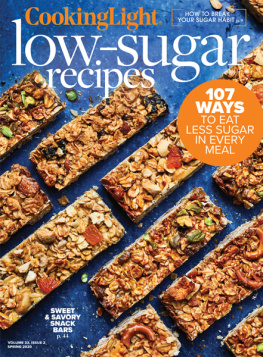
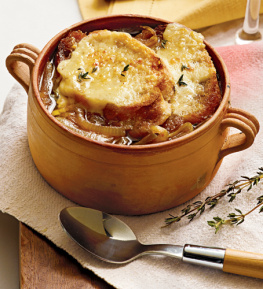
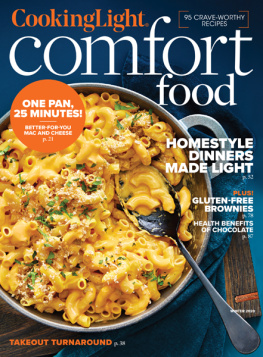


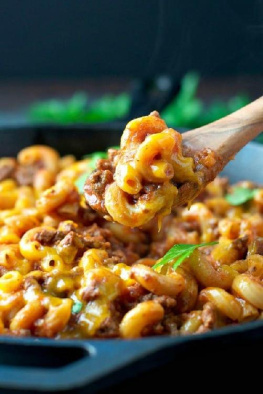
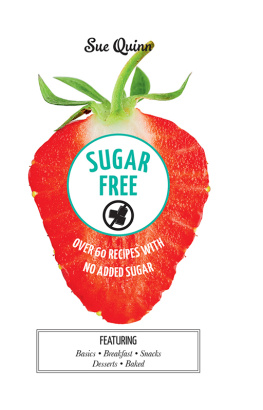



 Low Sugar Recipes SPRING 2020 CONTENTS COOKING LIGHT LOW-SUGAR RECIPES Learn how to reduce calories from added sugars and still enjoy the foods and drinks you love. Get excited about breakfast again with wholesome low-sugar dishes that help prevent that midmorning slump. Instead of packing a high-carb sandwich or sugary snack, turn to these low-sugar, portable lunches and munchies. Pump up the protein and dial back the carbs in these easy dinner recipesall ready in 30 minutes or less. Replace high-sugar desserts with these sweet treatsall 10 grams or less of added sugars per serving. Introduction
Low Sugar Recipes SPRING 2020 CONTENTS COOKING LIGHT LOW-SUGAR RECIPES Learn how to reduce calories from added sugars and still enjoy the foods and drinks you love. Get excited about breakfast again with wholesome low-sugar dishes that help prevent that midmorning slump. Instead of packing a high-carb sandwich or sugary snack, turn to these low-sugar, portable lunches and munchies. Pump up the protein and dial back the carbs in these easy dinner recipesall ready in 30 minutes or less. Replace high-sugar desserts with these sweet treatsall 10 grams or less of added sugars per serving. Introduction  Three kinds of apples provide natural sweetness in this pie.
Three kinds of apples provide natural sweetness in this pie. Overindulge your sweet tooth, and you up your chances of heart disease, tooth decay, and weight gain. Because sugar also stokes inflammation, it may spur other diseases. But sugar is critical in your cooking and baking. It gives you that delicious, deep browning in waffles, cookies, and cakes.
Overindulge your sweet tooth, and you up your chances of heart disease, tooth decay, and weight gain. Because sugar also stokes inflammation, it may spur other diseases. But sugar is critical in your cooking and baking. It gives you that delicious, deep browning in waffles, cookies, and cakes. 1. (Pure glucose has a ranking of 100.)
1. (Pure glucose has a ranking of 100.)  Go sweet without added sugar by tossing fresh or dried fruit into granola or grains. The USDA recommends limiting added sugars to 10% of your daily calories. For a 1,600-calorie diet, that means no more than 160 calories (10 teaspoons/40g) from added sugars. The American Heart Association advises even less: only 100 calories from added sugar daily (6 teaspoons/24g) for women and about 150 calories (9 teaspoons/36g) for men. Most Americans get way more than this, though: We average 19 teaspoons of added sugar a day312 calories worthmostly from beverages and packaged snacks.
Go sweet without added sugar by tossing fresh or dried fruit into granola or grains. The USDA recommends limiting added sugars to 10% of your daily calories. For a 1,600-calorie diet, that means no more than 160 calories (10 teaspoons/40g) from added sugars. The American Heart Association advises even less: only 100 calories from added sugar daily (6 teaspoons/24g) for women and about 150 calories (9 teaspoons/36g) for men. Most Americans get way more than this, though: We average 19 teaspoons of added sugar a day312 calories worthmostly from beverages and packaged snacks.